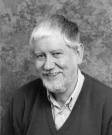Awardee Interviews | Biography: D. Phillip Woodruff
D. Phillip Woodruff

D. Phillip Woodruff gained his B.Sc. in Physics from the University of Bristol in 1965 and moved to the then brand new University of Warwick where he gained his PhD in 1968, working in the general area of the solid/melt interface. He took up a research fellowship in the same department, shifting his interest to the solid/vacuum interface, initially concentrating on LEED (low energy electron diffraction). He moved to a Lectureship in the University in 1969 and subsequently progressed to a full Professorship in 1987.
While based at Warwick throughout his research career, he has spent several periods of sabbatical leave at Bell Telephone (and latterly AT&T Bell) Laboratories in the late 1970s and 1980s working mainly with Neville Smith and the late Morton Traum on photoemission, photon-stimulated desorption and inverse photoemission but initially concentrating on experiments using the original TANTALUS synchrotron radiation facility at the University of Wisconsin-Madison. He also took sabbatical leave at the Fritz Haber Institute in Berlin in 1982, working on reflection-absorption infra-red spectroscopy of surfaces. During this period he developed a growing interest in the development and application of a wider variety of techniques designed to determine the structure of surfaces including photoelectron diffraction, a variant of the usual X-ray standing wavefield method using normal incidence to the Bragg scatterer planes, and ion scattering spectroscopies. The first two of these topics also formed a part of another core theme of his research, that of the exploitation of synchrotron radiation. This interest has led to his use not only of TANTALUS, but also of the origiiiili electron synchrotron (NINA) and the dedicated SRS facility in the UK, the NSLS at Brookhaven and the ALS at Berkeley in the USA, ACO and the ESRF at Orsay and Grenoble in France and BESSY in Berlin, Germany. Work at BESSY using the photoelectron diffraction technique in collaboration with the group of Professor Alex Bradshaw at the Fritz Haber Institute has been especially fruitful in the pursuit of quantitative structural information for adsorbed molecular species on metal surfaces, providing access, in particular, to the local geometry of C, Nand O-containing species. In 1998 Woodruff was awarded a Senior Research Fellowship by the UK Engineering and Physical Sciences Research Council, enabling him to concentrate full-time on research for 5 years. While remaining based at the University of Warwick, he has taken a part-time position at the Fritz Haber Institute with the particular objective of continuing the collaborative program on photoelectron diffraction.
Woodruff has been a member of the AVS since the early 1980s and was elected a Fellow in 1994. He was chairman of the British Vacuum Council from 1985-1990 and has served in a number of roles in the International Union for Vacuum Science, Technique and Applications (IUVST A), of which he is currently President. He has been heavily involved in the organization of a range of conferences including hosting the European Conference on Surface Science (ECOSS) at Warwick in 1993 and the IUVSTA triennial congress in Birmingham in 1998. He was founding editor of the Surfaces and Interfaces section of the Journal of Physics: Condensed Matter from 1992-1999 and continues to serve on the Editorial Advisory Boards of Vacuum and Surface Science.
Woodruff has authored or co-authored more than 300 publications including two monograph texts, The Solid/Liquid Interface and Modern Techniques of Surface Science, both published by Cambridge University Press. He was awarded a Max-Planck Research Prize jointly with Alex Bradshaw in 1994, and received the British Vacuum Council Prize and John Yarwood Memorial Medal in 1998.